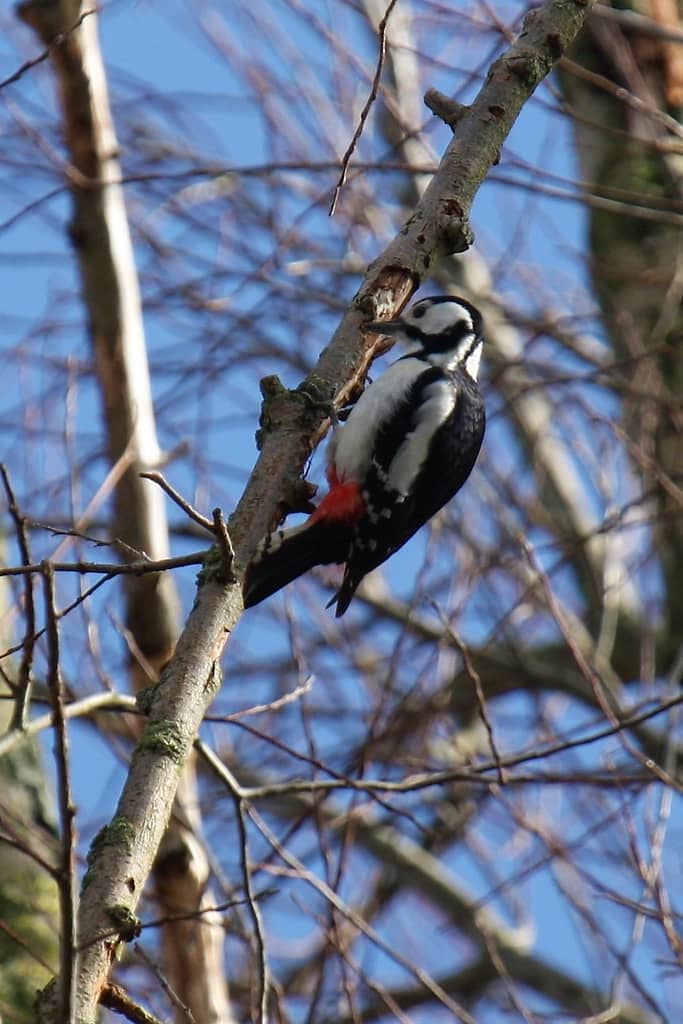Great spotted woodpecker
Explanation
When people think of the great spotted woodpecker, they are often reminded of vast forests. But this excellent climber is also very much at home in parks and gardens. In spring, you can clearly hear its characteristic drumming within the Tapijn grounds. It’s the great spotted woodpecker’s way of saying: this is my territory! Throughout the year, the attentive listener cannot fail to notice its short call. There are a number of rotten branches in the willow within the Tapijn grounds (opposite the aviary), making this an ideal place for the great spotted woodpecker to look for food, but also to use as a drum and to allow its drumming sound to be heard throughout Tapijn. We have placed a nest box in this willow for the great spotted woodpecker, in the hope that it will breed there one day and thus enabling us to follow the process from up close.
Relationship with humans
Why we do what we do
With the disappearance of forests and the clearing of rotten wood, humans can hinder the great spotted woodpecker. Due to these actions, they lose possible nesting places and sources of food. Fortunately, more and more rotten trees are left untouched in forests. In turn, Woodpeckers benefit from food that people offer up during the winter months and are more and more frequently taking up a position among people. Parks and gardens serve as nesting and foraging places.
They also sometimes use lampposts, producing exceptionally loud sounds.

